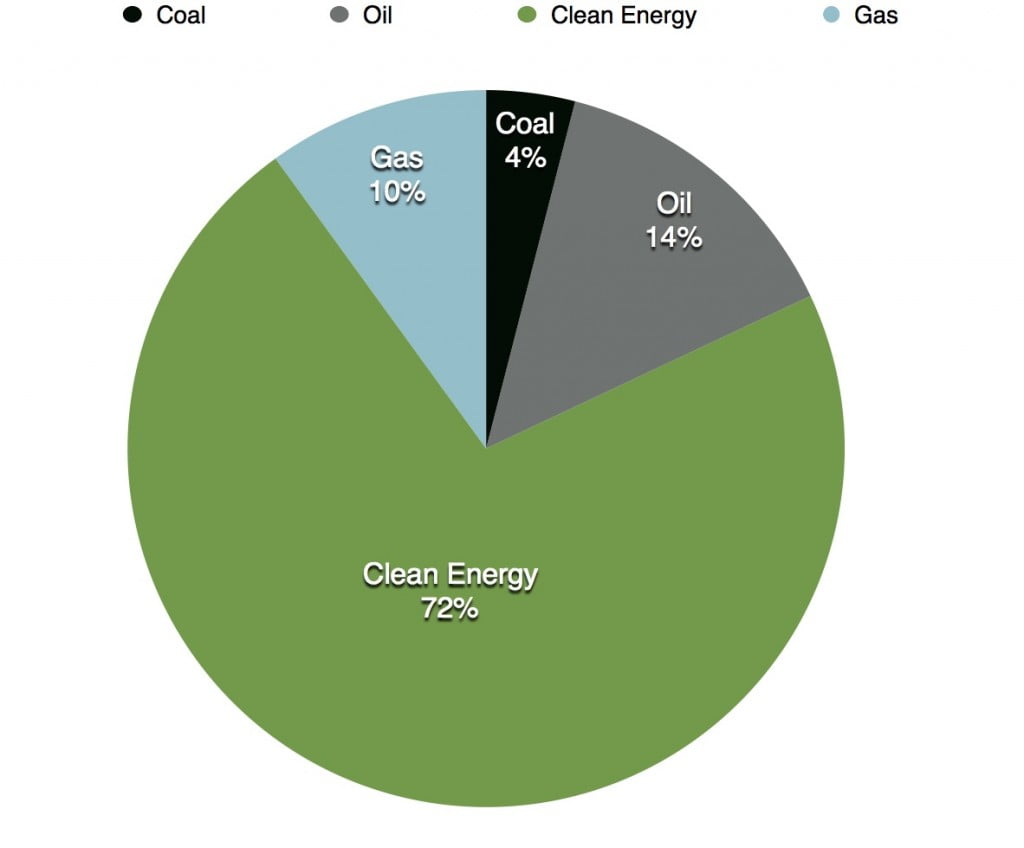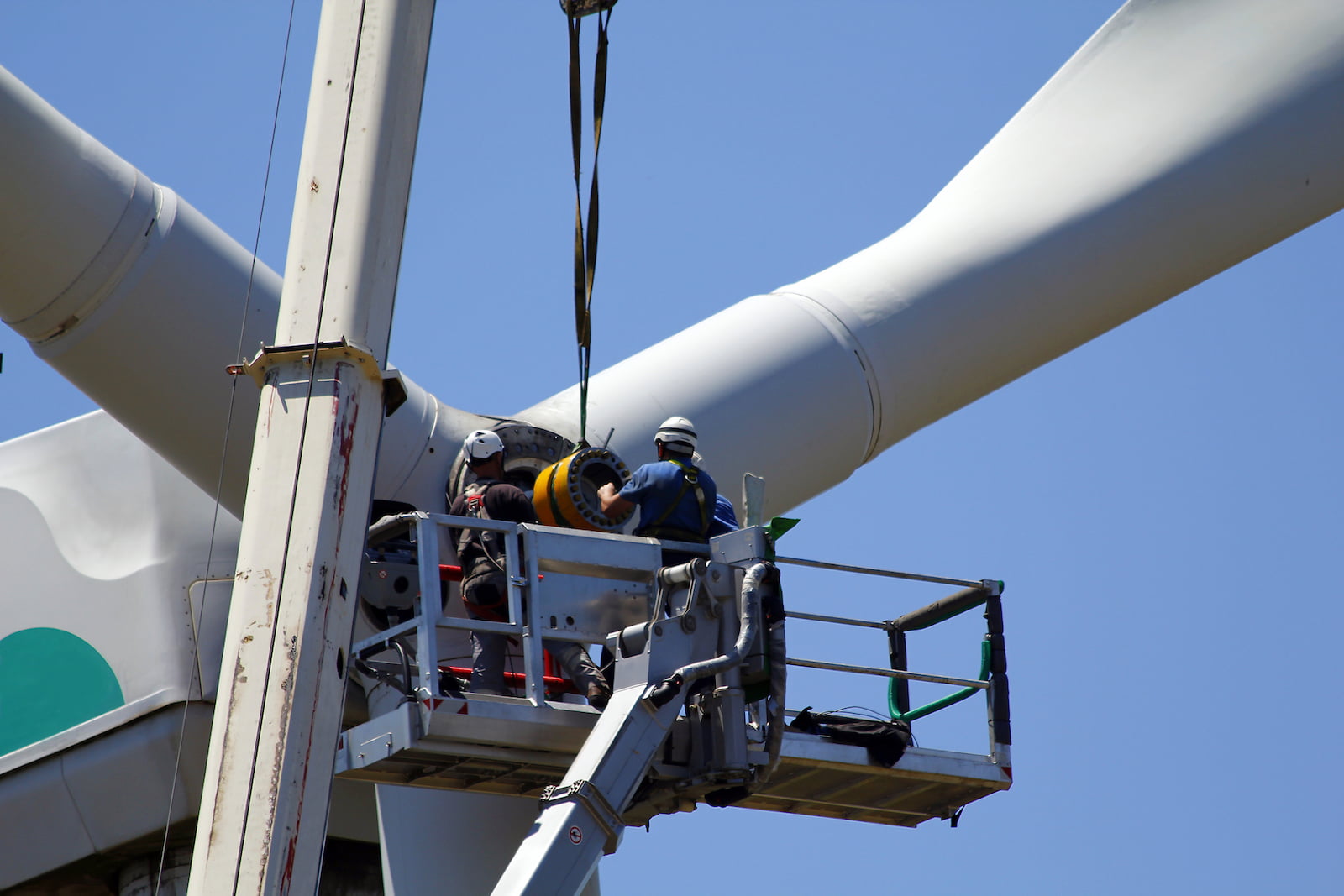A new Sierra Club analysis of Department of Energy jobs data across the energy sector demonstrates the key role of clean energy in building the strength of the American workforce. The data used in this analysis is entirely based on the Department of Energy’s U.S. Energy and Employment Report for 2017 and state-by-state jobs numbers.
The data show that clean energy jobs, including those from solar, wind, energy efficiency, smart grid technology and battery storage, vastly outnumber all fossil fuel jobs nationally from the coal, oil, and gas sectors. That includes jobs in power generation, mining, and extraction.
Nationally, clean energy jobs outnumber all fossil fuel jobs by over 2.5 to 1; and they exceed all jobs in coal and gas by 5 to 1. The DOE data also demonstrates that 41 states and Washington, D.C. – 80% of the total – have more clean energy jobs than fossil fuel jobs from all sources. Some of the widest gaps – where clean energy jobs vastly exceed fossil fuels jobs – are in major economies like Florida, North Carolina, Michigan, Virginia, Wisconsin, Georgia, Ohio, Tennessee, Pennsylvania and Indiana. Right now, only nine states have more jobs in fossil fuels than in clean energy, while only six states have more jobs in coal and gas than clean energy – and the growth of clean energy suggests that won’t be the case for long.
Clean Energy Jobs vs. Fossil Fuel Jobs

Policy makers often incorrectly assume or speak as though energy jobs mean coal, oil, and gas jobs exclusively. In fact, it’s clear that the energy jobs of both the present and the future are overwhelmingly in the clean energy sector.
Policies to incentivize and invest in clean energy have the potential to create millions of new jobs across the United States, far in excess of the fossil fuel sector’s current reality or potential for the future.
Policies designed to further spur the clean energy economy – like the Clean Power Plan (CPP) and state Renewable Energy Portfolio Standards – are already growing the economy and creating jobs. Efforts to reverse these policies will actually be counterproductive to employment growth, leaving even more workers behind.
The Path Forward
Jobs in clean energy already dominate the energy job space, and our transition to a robust economy powered by clean energy is still in its early stages. With progress proceeding full speed ahead at the state and local level, a bright future for lies ahead. For example, over twenty cities nationwide ranging from Salt Lake City, Utah to Georgetown, Texas have set a goal of achieving 100 percent clean energy by 2030, and states like Massachusetts and California are considering legislation to do the same. Meanwhile, other states like New York and Oregon have put themselves on a path to completely phase out coal-fired power plants in favor of clean energy.
Make Clean Energy Work for Working People
As this shift happens, however, we must ensure that the benefits of the clean energy economy are equitably shared and that the jobs and opportunities it creates provide family-sustaining wages, healthcare benefits, and union representation for workers.
America cannot afford to repeat the mistakes of the past, and so must take steps early on to ensure that workers who may otherwise be displaced by this transition have strong job stability, opportunities for upward mobility, and secure pathways to the middle class. This means supporting high road job strategies like responsible trade policies, project labor agreements, community benefits agreements, employer neutrality in union organizing drives, local hire, union apprenticeship and pre-apprenticeship programs, and efforts to open more of those opportunities to communities of color and low-income people.
Proactive investment in workforce development is also critical to repairing our economy, especially considering that almost three-quarters of employers across all energy sectors found it difficult to hire skilled workers, according to DOE data.
Justice for All
Environmental justice is equally important. The EPA’s Clean Power Plan ensures investments in frontline communities across the country. Rolling back the CPP only leaves those communities further behind.
It’s clear that the benefits of our country’s transition to clean power must be distributed in a way that treats working people and local communities fairly, so that everyone benefits.
In practice, this means working tirelessly to ensure that the communities and workers historically dependent on fossil fuels are prioritized and put first at every stage of our ongoing transition to an economy powered more fully by clean energy. It also means affordable and equitable access to the benefits of clean energy for communities of color and low-income people, and clear accountability of the clean energy industry.
This piece is an updated adaptation of an original piece by Adam Beitman, published with the permission of the Sierra Club.

